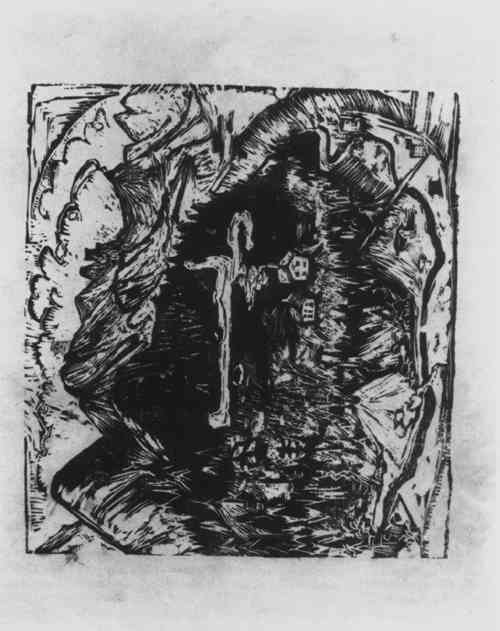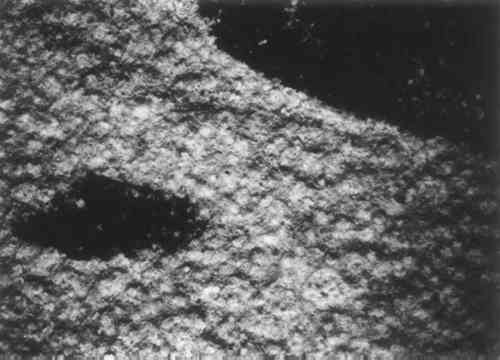TREATMENT OF A SALT IMPREGNATED WOODCUT BY E.L. KIRCHNERWeston Craigen
5 SUMMARY AND CONCLUSIONSTHE TREATMENT DESCRIBED ABOVE greatly improved the condition and appearance of Junkernboden(Figure 2). The sheet is now cool white; its pH is 7. The paper surface does not look completely normal, as, with the crystals dissolved away, the more minute pock-marks are visible (compare Figures 3 and 4). The sheet is brittle; its surface is hard, and it has retained a barely perceptible impression of the woven Nylon visible under magnification, despite the latter's extremely fine weave.
This treatment achieved the original intention of returning Junkernboden to an exhibitable condition. The two undesirable and unforeseen effects—the black stains which appeared at the beginning of the salt-extraction process and the skinning which occurred when the Nitex was removed from the recto after lining—did not disfigure the print to an unacceptable degree. Possibly, these effects could have been avoided by treating the print face-up on a suction table. Perhaps the black staining would have been avoided if the water was drawn directly through the print. Also, the brown adhesive residue would not have been in contact with any other material so skinning would not have occurred. The disadvantages of this method are: 1) that the print would have had to have been manipulated while wet in order to be lined. When wet the sheet was literally in the pulp state, and any manipulation probably would have been prohibitively hazardous, and 2) the pressure of the suction table could have impressed the surface texture of the table or the support layer between the print and the table surface into the paper to a greater degree than did the pressure of the Nitex and blotters. The treatment performed involved no handling of Junkernboden, and was, therefore, the least dangerous alternative. The improved appearance and stabilized condition of the print, which no longer requires special handling, substantiate the conclusion that the treatment was the best available. The positive response of the print itself to the treatment further corroborates this judgement. As treatment progressed, the paper regained enough of a “memory” to exhibit an impressed watermark, which had been undetected in the original examination. After such an attempt to return this Kirchner print to exhibitable ACKNOWLEDGEMENTSMANY MEMBERS of the staff of the Center for Conservation and Technical Studies, Fogg Art Museum contributed to this project. Leon Stodulski, Eugene Farrell, Arthur Beale, and especially Marjorie B. Cohn supplied advice and encouragement for which I am very grateful. |


